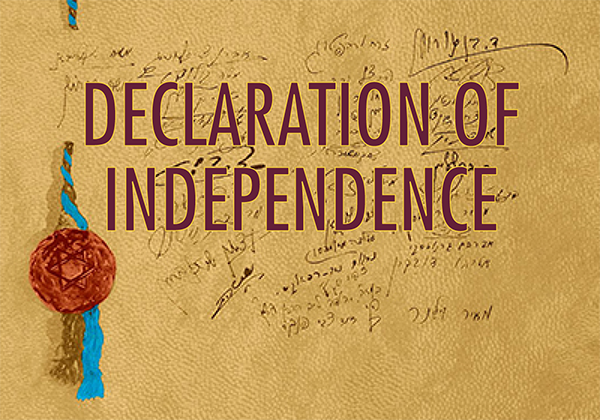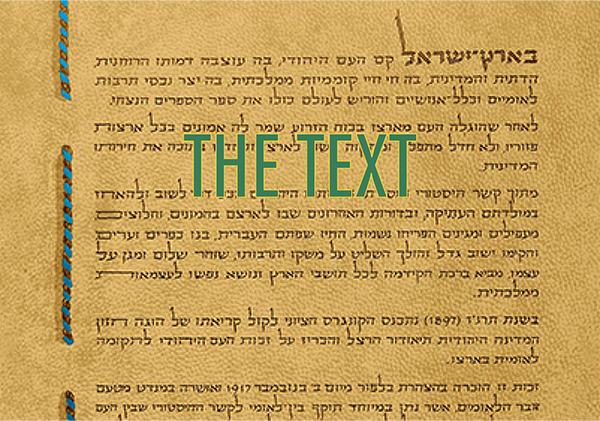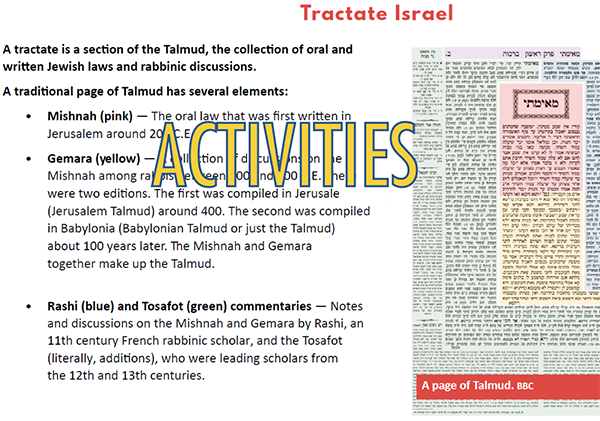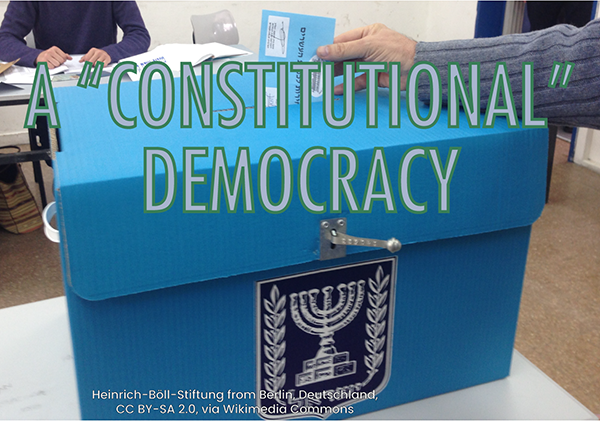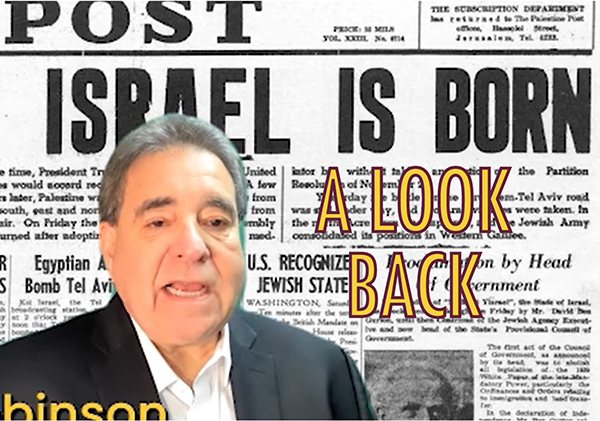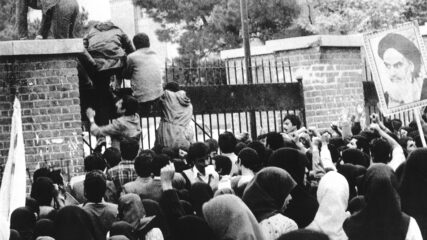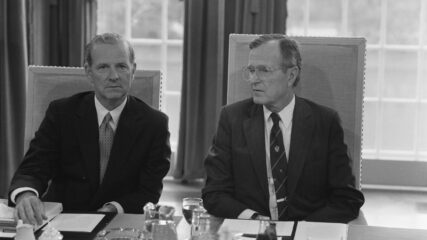Jewish Sovereignty Encased in Israel’s Declaration of Independence
The modern Zionist push to create a territory for Jewish sovereignty began in the 19th century, though the Jewish connections to the Land of Israel go back to biblical times. They include G-d’s biblical covenants (Español) to the Jewish people and repeated liturgical references to Jerusalem and Zion in Jewish prayer (Español). A thorough description of building a modern Jewish territory is chronicled in the history of Zionism in the Jewish Encyclopedia, 1906.
As an idea and movement, Zionism percolated throughout the century, catalyzed by other peoples who sought sovereign statehood, such as the Italians and Germans. Theodor Herzl became the key choreographer in assembling delegates from across the world to discuss establishing a state. The First Zionist Congress brought 200 delegates to Basel, Switzerland, in 1897. Herzl had published The Jewish State in 1896 (Español/Hebrew), which evolved as a blueprint for Israel’s declaration of statehood in 1948. Despite internal disagreements about definition and pace and extraordinary bursts of antisemitism in Europe and the Arab world, Zionists achieved practical successes with persistence in linking people to the land.
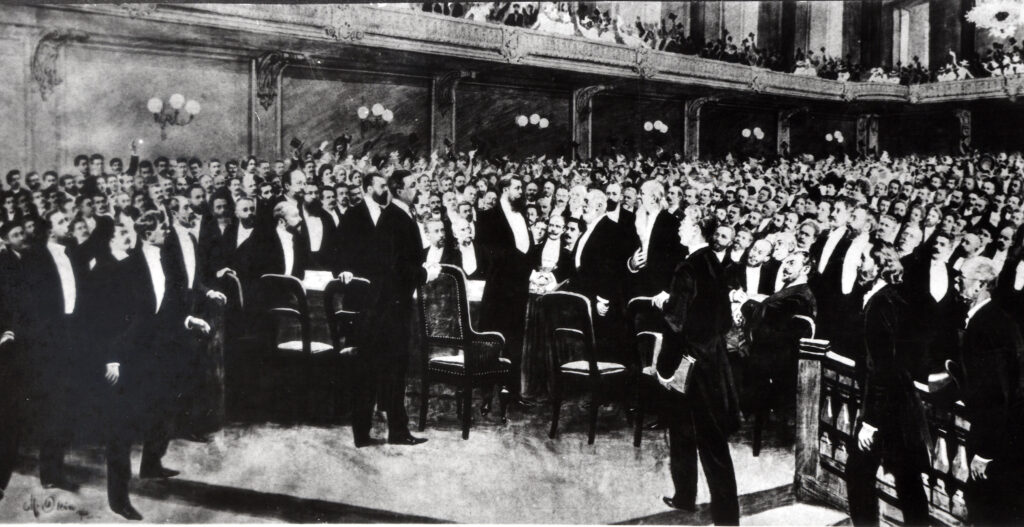
The Declaration’s Origins and Contents
Three weeks before declaring independence, Zionist leaders had not drafted the Declaration of Independence. Lawyers and politicians began working on the text, and the final version reflected multiple authors influenced by documents such as the U.S. Declaration of Independence and U.S. Constitution. As the date for British withdrawal from Palestine approached, the United States, Britain and the United Nations pressured Zionist leaders to delay independence, but they did not want to miss the opportunity to declare their state. David Ben-Gurion, who was the chairman of the Jewish Agency in Palestine and soon to be Israel’s first prime minister, read Israel’s Declaration of Independence (Español/Hebrew) at the Tel Aviv Museum on May 14, 1948 (5 Iyar 5708). That evening, the Egyptian Air Force attacked Jews in the newly declared state.
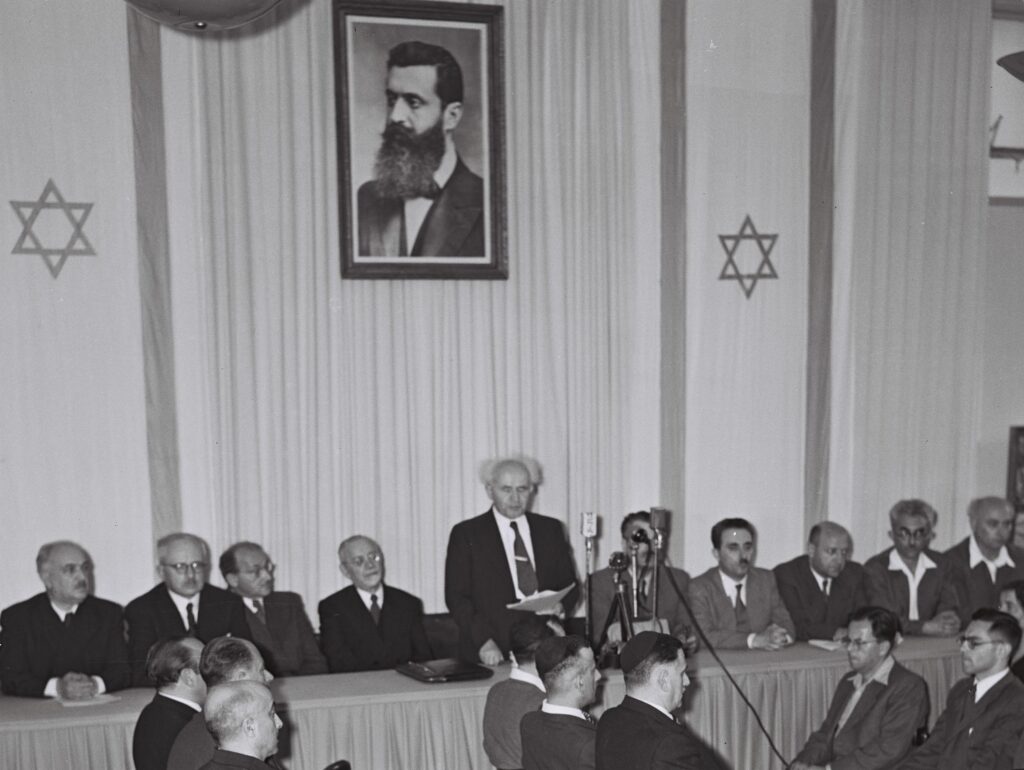
David Ben-Gurion reads Israel’s Declaration of Independence, May 14, 1948 (Frank Shershel, National Photo Collection of Israel)
The Declaration has four sections:
• A biblical, historical and international legal case for a Jewish state in the Land of Israel (Stanzas 1 to 7).
• The self-evident right of the Jewish people to claim statehood (Stanzas 8 to 10).
• The actual declaration of statehood (Stanza 11).
• Statements about how the state will operate, including citizen rights (Stanzas 12 to 19).
The document makes 10 key points:
• The Land of Israel is the birthplace of the Jewish people, where they formed their spiritual, religious and national identity.
• Exiled from Palestine, Jews remained faithful, praying and hoping for a return and restoration of their national freedom.
• In recent decades, Jews returned en masse, reviving their language, building cities and creating a thriving community.
• The First Zionist Congress proclaimed the right of the Jewish people to national revival in their own country.
• The Balfour Declaration and the Mandate of the League of Nations acknowledged the Jewish people’s right to reconstitute their national home in Palestine.
• The Nazi Holocaust highlighted the urgency for the re-establishment of the Jewish state to solve the problem of Jewish homelessness.
• Jews in Palestine contributed to the fight against the Nazis during World War II and earned recognition in the founding of the United Nations.
• The United Nations General Assembly adopted a resolution November 29, 1947, for the establishment of an independent Jewish state in Palestine.
• The Jewish state in Palestine, called Israel, was declared May 14, 1948, based on the natural and historic right of the Jewish people and the U.N. resolution.
• The State of Israel is dedicated to the principles of the U.N. Charter, offering peace and cooperation to neighboring states and promoting full social and political equality for all its citizens.
Abundant context shows the step-by-step process for Jewish state building that culminated in the Declaration of Independence. Verbal and geophysical depiction of the 1880s to 1947, of the pace and places Zionists systematically developed their renewed presence in the Land of Israel, can be viewed in a multimap presentation, Forming a Nucleus for the Jewish State: 1882-1947 (Español/Hebrew). It contains 20 maps and references the key sources and documents for Jewish state building. A succinct summary of the diplomatic events that led to the 1948 war is found in the introduction to U.N. General Assembly Resolution 181 (Español/Hebrew), approved November 29, 1947. The resulting international legitimacy for the partition of Palestine with a state for each community, made Ben-Gurion’s declaration of statehood possible. A 6-minute whiteboard video explains that 1947 resolution. For a representation of the Arab world’s total opposition to a Jewish sovereign presence in Palestine, including a scathing attack on Zionism and Israel, see the Saudi king’s biting letter to U.S. President Harry Truman in October 1947.
An excellent 10-page review (Español) of the British Mandate period from the end of World War I to Israel’s independence is available.
The period from 1945 to 1949 was difficult for the Zionists as they navigated among the British, the Soviets, the Americans and their hostile Arab neighbors. Arab states via Arab League representative Azzam Pasha (Español/Hebrew) declared vigorous opposition to the establishment of a Jewish state in September 1947. Azzam Pasha told three Zionist leaders “that only war could determine the outcome for Palestine’s future” and acknowledged that the Arabs could lose Palestine altogether. A full discussion of this period is provided by Two fine historians, Alon Kadish and Avraham Sela, provide a full discussion of the conflict in this period in a 46-minute webinar. An assessment of Arab views from 1945 to 1949 delivers candor from five notable Arab writers and historians intimately familiar with Palestinian Arabs’ weak and impoverished condition and dysfunctional nature in that era. Explaining the reasons for Israel’s establishment and showing how Arabs lacked agency and became refugees are A Short History of the 1947-1949 War and the distinctive views of Palestinian Arab Musa Alami (1949) and Israeli Yigal Allon (Español) (1952).
— Ken Stein, April 6, 2023

